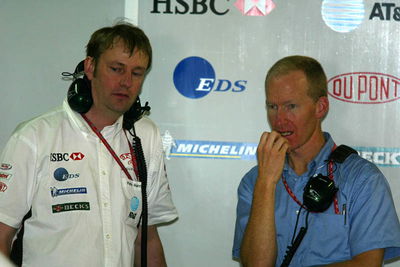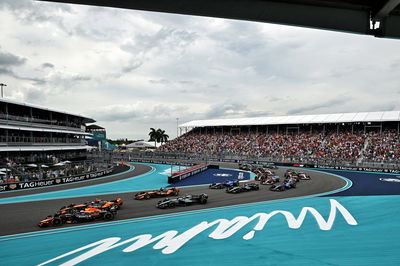Oastler retires.
After a successful twenty years in motor racing, Jaguar Racing's chief engineer Malcolm Oastler has decided to announce his retirement from the sport to concentrate on setting up a rural venture with his family in his native Australia.
"I've had a fantastic 20 year stint playing racing cars, but I don't think it's something you should do forever," Oastler said announcing his decision, "As much as I love the
technical aspects and the people, the lure of the southern sun and the beach have won the day."

After a successful twenty years in motor racing, Jaguar Racing's chief engineer Malcolm Oastler has decided to announce his retirement from the sport to concentrate on setting up a rural venture with his family in his native Australia.
"I've had a fantastic 20 year stint playing racing cars, but I don't think it's something you should do forever," Oastler said announcing his decision, "As much as I love the
technical aspects and the people, the lure of the southern sun and the beach have won the day."
Originally hailing from Sydney, Oastler has been involved in the design of successful racing cars since the mid-'80s, having raced in Australian Formula Ford in 1983 and 1984, finishing second in the National Championship in his rookie year.
He received a degree in mechanical engineering from Sydney University prior to settling in England in 1985, where he initially worked as a mechanic in Formula Ford 1600 and Formula Ford 2000, as well as driving for a short time he also drove in the latter category.
Soon after retiring from competition, he turned his hand to design and, in 1986, joined Reynard to design its Formula Ford chassis. In 1988, he collaborated with Adrian Reynard on the first Formula 3000 chassis and his designs subsequently won five International titles.
With the Champ Car concept becoming a reality in 1994, Oastler led the design team from the start. His 95I chassis won eight races, including the Indy 500 and started from pole position no less than thirteen times. Throughout 1996-98, CART cars designed by Oastler and the Reynard design team continued to add further successes, taking four championships and over 50 race wins in five years.
While still with Reynard, Oastler became technical director at the new British American Racing team, designing its first three cars - including those which took two podium finishes in 2000 and 2001 - before joining Jaguar Racing as a consultant on the design of the R4. He was appointed chief engineer in 2003.
"I owe a huge debt of gratitude to everyone I have had the pleasure of working with throughout my career. In particular, I want to express my sincere appreciation to everyone at Jaguar Racing. This was far from an easy decision for me. I have thoroughly enjoyed my time with Jaguar in helping to make the team competitive. My key challenge over the past year has been to ensure we produce a competitive racing car and, in the Jaguar R5, I believe we have achieved that result. A comprehensive development programme over the course of this season will ensure that remains the case."
Having contributed to the concept of the 2003 R4, Oastler has since played a critical role in the development and rollout of this year's challenger, the R5. He will work his notice period and thus remains with Jaguar Racing until mid-June.
"We are sad to see Malcolm leave given his valuable input to our programme and wish him the very best for the future," Jaguar Racing's MD David Pitchforth commented, "He has contributed an enormous amount to motorsport over a twenty-year period, with his designs having graced everything from Formula Ford to F3000, Indycar and Formula One.
"Since joining Jaguar Racing in 2002, we have benefited enormously from Malcolm's input into the R4 upgrade programme and the design and development of our 2004 challenger, the R5. We had agreed from the onset with Malcolm that his tenure with Jaguar Racing would be relatively short-term and focused upon what were critical short-term objectives aimed at ensuring the competitiveness of the Jaguar R4 and R5.
"Malcolm's role as chief engineer allowed him great autonomy and freedom between various departments and it is a role that worked very well indeed for both parties. His engineering experience and acumen have manifested themselves clearly in this year's racing car. I would like to take this opportunity on behalf of everyone at Jaguar Racing in wishing Malcolm all the very best of luck for the future."










